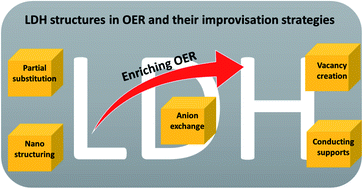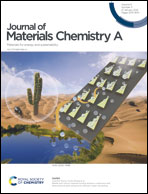A vast exploration of improvising synthetic strategies for enhancing the OER kinetics of LDH structures: a review
Abstract
In the last few decades, layered double hydroxide (LDH) based materials have been given a lot of attention to the researchers due to significant advances in enabling efficient oxygen evolution. Their exceptional layered structure, sole electronic structure, and high specific surface area, makes them to show good OER catalytic performance. The catalytic performances of LDHs are largely governed by their composition, morphology, and intercalated anions, which can be produced via exfoliation processes and different synthetic methods. Although LDH materials have enormous advantages in energy-related applications, there are still some inherent drawbacks in the OER process that need to be overcome for long-term usage. These drawbacks in the internal properties of LDHs are attributed to their low electrical conductivity and structural collapse, particularly during the exfoliation process, making the OER kinetics unpredictable. To overcome these drawbacks, researchers have developed many strategies recently, and these are (i) nano-structuring; (ii) the addition of cations; (iii) anion exchange; (iv) the synthesis of materials with conductive supports; and (v) vacancy creation. Hence, this review ultimately focuses on how to overcome the extensive issues faced by LDHs in terms of synthetic and exfoliation methods and discusses various strategies developed in recent years in the field of the electrocatalytic water-based oxygen evolution reaction.

- This article is part of the themed collection: 2021 Journal of Materials Chemistry A most popular articles


 Please wait while we load your content...
Please wait while we load your content...